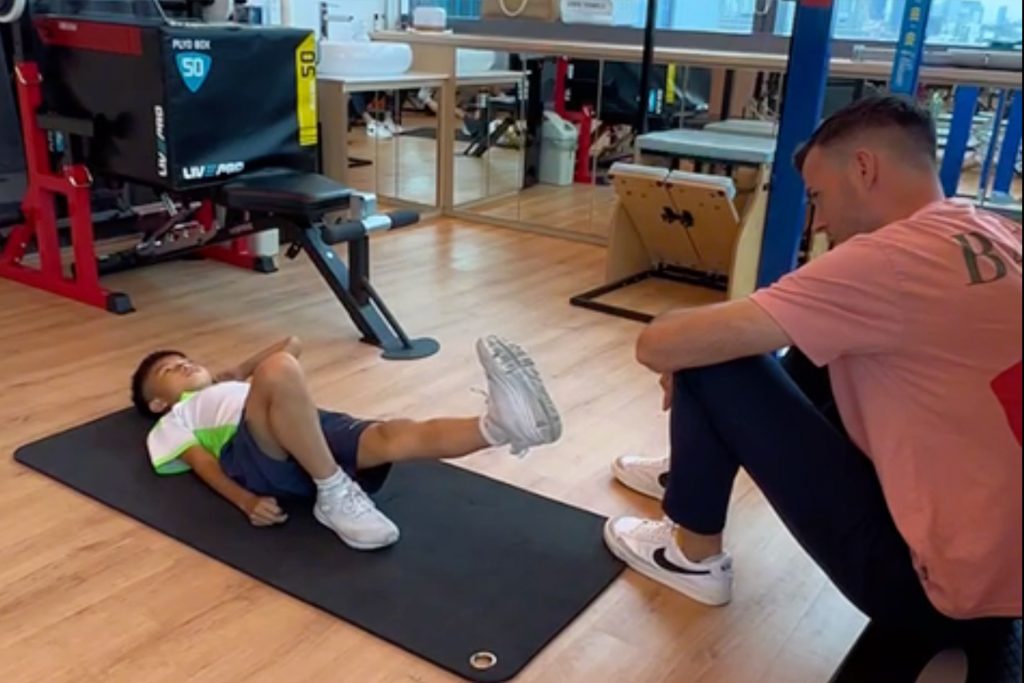Pediatric Sports Injuries on the Increase
No longer confined to the conventional treatment of injuries, pediatric physiotherapy now encompasses a comprehensive understanding of young athletes’ unique physiological growth patterns and emotional health.
Young athletes dealing with injuries face not just the pain and discomfort of their physical condition but also a whirlwind of emotions — from anxiety over long-term prospects in their sport to frustration at being benched during critical developmental years.
The increasing participation in sports among children has brought a surge in pediatric sports injuries, a trend that has significant implications for their health and well-being. This increase in kids’ sports injuries isn’t just a matter of physical health; it reflects a broader shift in how we approach youth sports and healthcare.
Sports injuries in children aren’t mere scaled-down versions of adult injuries; they involve complex interactions between their developing bodies and the demands of competitive sports. For instance, a seemingly minor injury like a sprained ankle in a child can have a more profound impact than an adult, possibly affecting their growth and physical development.
Specific Sports Injuries Common to Young Athletes
Pediatric sports-related injuries are an increasing concern. These injuries, common among young and growing athletes, range from acute accidents to chronic overuse conditions. Understanding these injuries is crucial, mainly as more children engage in sports during crucial developmental stages.
One of the most prevalent issues in pediatric sports medicine is overuse injuries. Unlike adults, children and adolescents have growth plates, areas of developing cartilage at the ends of their bones, which are more stress-resistant. Repetitive activities, often seen in sports like gymnastics, swimming or tennis, can lead to conditions like Osgood-Schlatter or Sever’s Disease. These painful conditions can impact a child’s growth and development if not appropriately addressed.

Traumatic injuries are also common in youth sports. Contact sports such as rugby and football frequently see pediatric sports-related injuries like fractures and ligament tears. While they may heal, fractures require careful management to ensure proper bone growth post-injury.
As children grow rapidly in adolescence, they may experience muscle strength and flexibility imbalances, leading to injuries. For example, patellar tendinitis, commonly known as ‘jumper’s knee’, is often seen in basketball and volleyball players due to the repetitive jumping and landing involved in these sports.
Read related article
Get Back in the Game: How Physiotherapy Can Treat Basketball Injuries
Pediatric sports-related injuries require a nuanced physiotherapy approach considering the unique aspects of a child’s or adolescent’s developing body. With the rising participation in youth sports, it is imperative to prioritize injury prevention and proper management, ensuring that these young athletes can enjoy the benefits of sports while minimizing the risks to their long-term health and development.
Prevention and education are key in managing sports injuries in childhood and adolescence. Coaches and parents play a vital role in this, ensuring that young athletes are not overtraining and are using proper techniques. Additionally, incorporating strength and flexibility training and adequate rest periods can help mitigate the risk of overuse and traumatic injuries.
Keeping Your Child Engaged Is Crucial for Rehab
Rehabilitation from pediatric sports-related injuries requires maintaining a child’s engagement is not just beneficial; it’s crucial. The road to recovery, especially for young athletes, is as much about healing the body as nurturing the spirit. Engaged children are more likely to adhere to their rehabilitation programs, leading to more effective and faster recoveries.
Remember, a child’s attention span and emotional needs differ vastly from adults. Therefore, treatments designed for pediatric sports injuries should incorporate elements that cater to their young minds. It’s about blending physical recovery with an approach that keeps them motivated and positive. After all, a child who is mentally and emotionally invested in their recovery is on the fastest path to getting back in the game.
But how do we keep these young minds engaged? The key lies in making rehab exercises not only beneficial but also enjoyable. For instance, turning exercises into games can significantly boost a child’s interest and participation. Also, setting achievable goals and celebrating small victories give them a sense of accomplishment and a clearer view of their progress.
Parental and Involvement of Coaches
The role of parents and coaches in the recovery process from pediatric sports-related injuries is invaluable. Your involvement goes beyond mere supervision but more support, encouragement, and understanding of the nuances of rehabilitation.
Active participation by parents and coaches can significantly uplift a child’s morale and adherence to the recovery regimen. They act as motivators and educators, helping young athletes understand their injuries and the importance of following therapeutic protocols. This collaborative approach expedites the physical healing and reinforces the child’s confidence and mental resilience, which are crucial for a complete return to sports.
Read related article
Pediatric Physiotherapy: Supporting Children’s Development
Appointments for Pediatric Sports Injury Care at HelloPhysio
HelloPhysio’s team of clinical practitioners are skilled in pediatric care and empathetic to the challenges young athletes face. This sensitivity allows us to connect with our young patients, making their rehabilitation journey more comfortable and engaging.
We believe in patient education and collaborating with families and coaches to create a supportive recovery environment. This inclusive approach not only aids in quicker recovery but also helps prevent future injuries.
At HelloPhysio, it’s not just about healing injuries; it’s about nurturing young athletes’ overall well-being and helping them safely return to the sports they love. Our commitment to inclusive, compassionate care sets our pediatric sports injury practice apart in Singapore.

